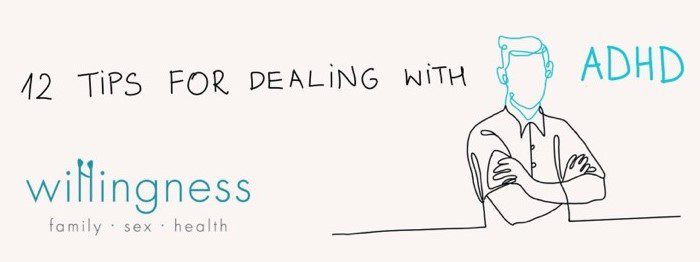Understanding Self-Harm
Locally, 1200 people engage in deliberate self-harm (DSH) annually (Vassallo, 2020). Hence this blog aims to give an insight into DSH. Some consider it as a cry for attention while others attribute it to suicidal thoughts and ideations. Although it may seem contradictory, those who self-harm are usually not open about their behavior, hence busting the myth that DSH is an attention seeking behavior.
Understanding Intent Behind Self-Harm
However, research remains inconclusive about whether self-harm is intended to end life or cause injury. Nevertheless, some studies suggest self-harm can function as a coping method to manage overwhelming emotions. Moreover, Suyemoto argued it may help individuals avoid suicide by reducing intense psychological distress. Consequently, understanding this distinction is vital for providing effective support and appropriate mental health interventions.
Why do people self-harm?
DSH is used to alleviate built-up tension and is observed to be more common in those who suffer from anxiety or depression (Mangnall & Yurkovich, 2008). Furthermore, it has been attributed with fear and tension with the results being relief, decreased tension and satisfaction (Lauw et al., 2015). Nonetheless, this is only a temporary solution as the underlying problem and distressing thoughts are left unresolved (”The truth about self-harm”, 2022).
Breaking the Cycle of Harmful Coping
In nature, self-harm risks present as addictive behaviours that provide temporary emotional relief. Additionally, such actions can serve as a way to express unspoken pain. However, recognising the harm involved is crucial to understanding the cycle’s destructive impact. Moreover, awareness of healthier coping methods can empower individuals towards lasting emotional wellbeing. Therefore, seeking help early offers opportunities to explore supportive and non-harmful coping mechanisms. Likewise, professional intervention can guide people in building resilience and breaking harmful behavioural patterns. Furthermore, supportive relationships can encourage openness about feelings that might otherwise remain hidden. Consequently, friends and family can play a vital role in recovery efforts. Ultimately, replacing harmful behaviours with positive outlets fosters emotional growth and stability. Finally, consistent support and healthy coping strategies can significantly reduce self-harm risks over time.
How to Prevent Self-harm Risks
Many people can reduce self-harm risks by confiding in someone they trust about their thoughts, problems, and emotions. Talking with a supportive friend or qualified professional allows individuals to share openly while developing healthier coping strategies together. Distraction techniques work effectively by redirecting emotions into safe outlets that provide immediate relief and emotional grounding. Activities such as music, drawing, journal writing, or spending time with others help replace harmful behaviours with positive engagement. Seeking help remains the essential first step towards overcoming self-harm risks and building resilience through healthier responses to distress.
Supporting Others to Reduce Self-harm Risks
On the other hand, when you know someone facing self-harm risks, showing empathy can make a real difference. Additionally, listening carefully to their concerns allows them to feel understood and less isolated in their struggles. Furthermore, acknowledging their feelings without judgment encourages openness and trust, which is vital for support. Moreover, gently suggesting professional help can guide them towards specialised care that addresses their specific needs. Similarly, offering to accompany them to appointments may reduce anxiety and promote their willingness to seek assistance. Consequently, remaining patient during their journey demonstrates your ongoing commitment to their wellbeing and recovery. Finally, combining empathy, active listening, and professional guidance significantly reduces self-harm risks while fostering hope and resilience.
Final Thoughts on Self-harm Risks
Overall, understanding self-harm requires compassion, awareness, and consistent support from friends, family, and qualified mental health professionals. Furthermore, recognising the underlying causes can guide individuals towards healthier coping strategies that promote emotional stability and resilience over time. Moreover, early intervention combined with empathy significantly reduces risks and encourages recovery in a safe and supportive environment. Ultimately, fostering open conversations about self-harm helps break stigma and empowers individuals to seek help without fear or shame.
Self-harm Risks: Written by Yasmine Bonnici
If you think that you can benefit from professional support on this issue you can reach out here.
Yasmine Bonnici graduated in Nursing and also completed her Masters in Counselling. She has worked with victims of domestic violence, clients dealing with suicidal ideations, bereavement, separation and anxieties. She is currently working with Willingness Team as a counsellor seeing clients who would like to explore their own identity and deal with any surfacing issues.
References
Lauw, M., How, C., & Loh, C. (2015). Deliberate self-harm in adolescents. Singapore Medical Journal, 56(06), 306-309.
Mangnall, J., & Yurkovich, E. (2008). A Literature Review of Deliberate Self-Harm. Perspectives In Psychiatric Care, 44(3), 175-184. https://doi.org/10.1111/j.1744-6163.2008.00172.x
The truth about self-harm. Mental Health Foundation. (2022). Retrieved 27 May 2022, from https://www.mentalhealth.org.uk/publications/truth-about-self-harm.
Vassallo, S. (2020). Psychiatrist Says Suicides In Malta Dipped During Pandemic But Experts Preparing For Frontliner Fatigue. Lovin Malta. Retrieved 27 May 2022, from https://lovinmalta.com/news/psychiatrist-says-suicides-in-malta-dipped-during-pandemic-but-experts-preparing-for-frontliner-fatigue/.







